Brazilian Butt Lift in Phuket
Search and Compare the Best Clinics and Doctors at the Lowest Prices for Brazilian Butt Lift in Phuket
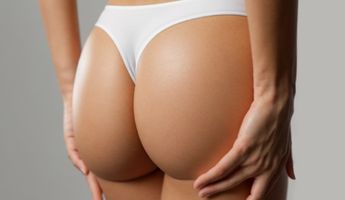
Find the best clinics for Brazilian Butt Lift in Phuket
With Medijump you can browse 1 facilities offering Brazilian Butt Lift procedures in Phuket. The cheapest price available is $4,300 in Bangkok. And for the cheapest price globally, prices start from $113 in United Kingdom.
Brazilian Butt Lift in Thailand
Price: $ 4,300
Brazilian Butt Lift in Bangkok
Price: $ 4,300
United Kingdom offers the best prices Worldwide
Price: $ 113
From 15 verified reviews
Limbani, 28 August 2024
Excellent care and fantastic results! The staff at PPSI made me feel comfortable and supported throughout the entire process.
Compare Before & After Photos of _procedure_photos.phpBrazilian Butt Lift
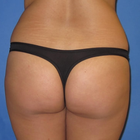

Front view
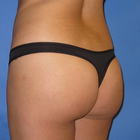

Half-side view
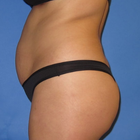
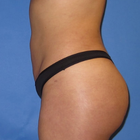
Full-side view
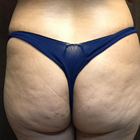
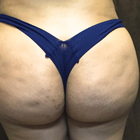
Front view
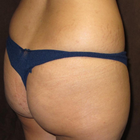

Half-side view


Full-side view
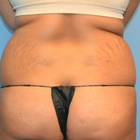

Front view
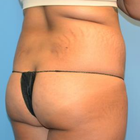
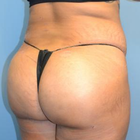
Half-side view
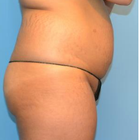
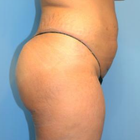
Full-side view
WHY US?
At Medijump, we're making medical easy. You can search, compare, discuss, and book your medical all in one place. We open the door to the best medical providers worldwide, saving you time and energy along the way, and it's all for FREE, no hidden fees, and no price markups guaranteed. So what are you waiting for?

Free

Best Price

Widest Selection

Risk-Free
What you need to know about Brazilian Butt Lift in Phuket
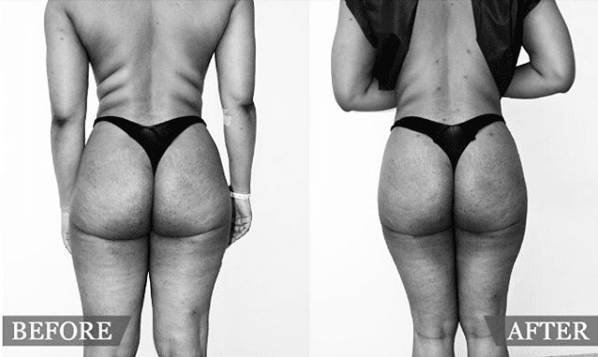
The Brazilian Butt Lift is a specialized fat transfer procedure that augments the size and shape of the buttocks without implants (with implants is the more traditional Butt-Lift procedure). A plastic surgeon first performs liposuction to remove fat from other areas of the body (often the stomach, hips, or thighs). These fat cells are then cleansed before being injected that into the buttocks at different depths for a more natural look and feel.
This plastic surgery procedure allows for perfectly shaped and round buttocks. It is most common among women, as plump and well-toned buttocks can vastly complement the physical appearance. Different fat transferring techniques are used to transfer adipocytes in your buttocks to give them a fuller appearance. A specialized surgeon removes excess fat cells from certain fat-rich areas of your body and injects them into your buttocks to augment them. It has a double advantage, as the donor site loses fat and becomes thin whereas the recipient site becomes plump. Aging and genetics can be the cause of flat butts.
Remember! Not everyone is a good candidate for this procedure. A number of factors should be considered before going for the surgery. Share your medical history with your potential surgeon and discuss your desired results, cost, risks, success rate, recovery time, aftercare, pros and cons of the surgery with the surgeon, and then go for it.
What is the cost of Brazilian Butt Lift in Phuket?
The expense of the Brazilian Butt Lift in Phuket tends to diverge significantly owing to a range of influencing factors. A combination of aspects like the complication level and length of the process, the proficiency and competence of the surgeon, along with other correlated medical expenses such as anesthetics or operating room charges contribute to this cost variance. It's beneficial to understand that the costs generally comprise fees for pre and post-surgical care.
In particular scenarios, the final cost could elevate if extensive liposuction is required for fat transfer. The volume of fat required for transfer, the sites from where the fat gets extracted, and the count of areas undergoing treatment might also impact the price. For this reason, there might be a minor irregularity in costs amongst clinics even within the same vicinity.
As this procedure is predominantly regarded as cosmetic, it isn't typically covered by insurance offerings. Consequently, full payment responsibility typically falls to the patient. Many surgical centers and surgeons may extend financing alternatives or installment deals to render the procedure widely accessible to an array of patients.
What does a Brazilian Butt Lift Procedure Involve?
The procedure begins with applying general anesthesia along with intravenous sedation. After this, the surgeon marks the places which need to be augmented with the surgical marker. Points are marked along which the fat is to be injected into your buttocks. Fat is obtained from the abdomen and flanks. The donor site is sterilized and the excessive fat is removed through liposuction. A cannula is inserted through small incisions and fat cells are collected in a specialized container. This fat is purified before injecting it into the recipient site. The excessive fluid is removed from it and sterilization reduces the chances of infection. Small Incisions of diameter 2-3mm are applied on your buttocks through which fat cells are injected. These incisions are given along creases or at places where they are least visible. After the procedure is completed, sutures are used to close the incisions and sterile tape is applied to the wounds.
How Long Should I Stay in Phuket for a Brazilian Butt Lift Procedure?
It is generally an outpatient procedure and takes 1-2 hours, after which you can either be discharged on the same day or an overnight stay in the hospital is usually advised, depending upon your physical state. Your health conditions are monitored and you are allowed to leave if everything is fine. Still, you will have to stay in Phuket for at least 14 days for follow up checks. During this period you are kept under observation, stitches are removed after and you're allowed to travel home.
What's the Recovery Time for Brazilian Butt Lift Procedures?
After this operation, you are not allowed to sit or lie with your whole weight on your buttocks for at least 2 weeks. You'll experience moderate pain during the recovery period which is controlled through painkillers. There is inflammation and bruising around the operated area, but this swelling subsides gradually in a few days. Do not drive for at least 6-8 weeks as it requires you to sit for a longer period of time. Normal activities associated with sitting and lying can be restarted after 8 weeks. You can start your norman routine after 10 to 14 days. A total of 6 months are needed for the complete results to show up.
After the initial healing, you may want to sit on a special pillow, which puts the pressure on your thighs rather than your butt.
What sort of Aftercare is Required for Brazilian Butt Lift Procedures?
It's crucial to follow your surgeon's post-procedure instructions to ensure proper healing and recovery. Here are some points which should be considered when looking after yourself after being discharged from the hospital:
- Do not take a bath for at least 48 hours after the surgery. It increases the chances of infection.
- Wear special garments that keep your butt lifted.
- Start walking a little the very next day after your surgery to avoid embolism.
- Do not sit or lie on your back for at least 2 weeks. Sleep on your side or abdomen.
- Do not bend or climb up the stairs.
- Avoid strenuous activities such as the gym, running, swimming, etc. because they might put stress on your stitches, opening them up before the due time.
- Do not lift your children or any other heavy object.
- Avoid smoking and drinking a few weeks before and after the surgery, as tobacco and alcohol slow down the natural healing process.
- Abstain from sexual activity until allowed by your doctor.
What Should You Expect Before and After the Procedure?
Ahead of the Brazilian Butt Lift, it's pivotal to ready your body for the operation. This preparation encompasses maintaining a healthy diet and weight. Patients are also advised to abstain from smoking and moderate alcohol consumption for several weeks prior to the surgery, to enhance your body's inherent healing capacity and lessen the likelihood of complications. Comprehensive discussions with your healthcare team during this time are crucial to comprehend fully the procedure, anticipated outcomes, potential risks, and the recuperation process. It's beneficial to have a candid discourse with your surgeon about your aesthetic objectives to ensure they are attainable and realistic.
After the Brazilian Butt Lift, anticipate a certain degree of discomfort and swelling in the regions where fat was eliminated and injected. This is a typical post-surgical symptom and can be managed effectively with prescribed medications. Nutrition plays an essential role in post-surgical recovery. A diet high in proteins and vitamins can promote quicker healing and improved recovery. Moreover, maintaining target weight post-surgery is vital to preserving the cosmetic results achieved.
What's the Success Rate of Brazilian Butt Lift Procedures?
A majority of patients undergoing the Brazilian Butt Lift often experience successful outcomes. This success rate is attributed to several factors including the surgeon's proficiency, the patient's health status, and the quality of the fat being transferred.
An important factor heightening the success rate is the Brazilian Butt Lift's use of autologous fat (fat from your own body). This approach lowers the likelihood of adverse side effects or rejection than when synthetic materials or implants are used. Furthermore, a strategic and individualized technique, involving careful and evenly distributed injection of the harvested fat into varying layers and sections of the buttocks, notably augments the survival rate of the transferred fat cells.
Notably, the patient's commitment to healthy lifestyle habits and adherence to post-operative guidelines significantly sway the success rate of the procedure. Regular exercise, maintaining an ideal weight, balanced nutrition, and sidestepping detrimental habits like smoking are instrumental in preserving the results of the Brazilian Butt Lift.
What are the Potential Risks of Brazilian Butt Lift?
Brazilian Butt Lift is the fastest growing cosmetic surgery in the world, but it's also known as one of the most dangerous. When performed by a qualified, experienced board-certified plastic surgeon, a Brazilian butt lift has a high success rate. To be successful, a fat graft needs nutrition and so has to be injected into tissue that has a blood supply. Fat can survive if injected into other fat, but up to 90% of it can be absorbed if it is. Fat has more chance of staying in place if it is inserted into muscle – but this is where the risk lies. Injecting fat into the buttock can easily lead to serious problems if done incorrectly. These include a fat embolism when fat enters the bloodstream and blocks a blood vessel.
According to a study by Mayo Clinic, 1/3,000 people who went through this surgery died - although these odds are tiny, it still represents the highest risk among the popular plastic surgeries. Still, Brazilian butt lift surgery is on increase due to an increasing craze for big buttocks. Always opt for an experienced and certified surgeon to avoid any complications
Are there Alternatives to Brazilian Butt Lift Procedures?
Some non-surgical alternatives are also available to Brazilian butt lift surgery. Surgery should never be the only option:
- Sculptra Aesthetic: it is a filler best known for butt lifting. It is injected into the butts where it stimulates collagen production and improves the elasticity of the area. Increased collagen increases the size and gives a rounded contour to your buttocks. 2-3 sessions are needed for the best results. It is a quick treatment with almost no downtime.
- Thermage: radiofrequency waves are used in this technique. These waves heat up the skin and underlying tissue boosting collagen production. As a result, your butts look lifted and toned.
- Exercises: some exercises are found to be effective in contouring your buttocks and increasing the muscle mass, particularly squats.
Whilst the information presented here has been accurately sourced and verified by a medical professional for its accuracy, it is still advised to consult with your doctor before pursuing a medical treatment at one of the listed medical providers
No Time?
Tell us what you're looking for and we'll reachout to the top clinics all at once
Enquire Now

Popular Procedures in Phuket
Prices Start From $208

Prices Start From $600

Prices Start From $167

Prices Start From $931

Prices Start From $76

Recommended Medical Centers in Phuket for Brazilian Butt Lift

- Interpreter services
- Translation service
- Religious facilities
- Medical records transfer
- Medical travel insurance
- Health insurance coordination
- TV in the room
- Safe in the room
- Phone in the room
- Private rooms for patients available

- Interpreter services
- Translation service
- Religious facilities
- Medical records transfer
- Medical travel insurance
- Health insurance coordination
- TV in the room
- Safe in the room
- Phone in the room
- Private rooms for patients available

- Interpreter services
- Translation service
- Religious facilities
- Medical records transfer
- Medical travel insurance
- Health insurance coordination
- TV in the room
- Safe in the room
- Phone in the room
- Private rooms for patients available

- Interpreter services
- Translation service
- Religious facilities
- Medical records transfer
- Medical travel insurance
- Health insurance coordination
- TV in the room
- Safe in the room
- Phone in the room
- Private rooms for patients available

- Interpreter services
- Translation service
- Religious facilities
- Medical records transfer
- Medical travel insurance
- Health insurance coordination
- TV in the room
- Safe in the room
- Phone in the room
- Private rooms for patients available

- Interpreter services
- Translation service
- Religious facilities
- Medical records transfer
- Medical travel insurance
- Health insurance coordination
- TV in the room
- Safe in the room
- Phone in the room
- Private rooms for patients available

- Interpreter services
- Translation service
- Religious facilities
- Medical records transfer
- Medical travel insurance
- Health insurance coordination
- TV in the room
- Safe in the room
- Phone in the room
- Private rooms for patients available

- Interpreter services
- Translation service
- Religious facilities
- Medical records transfer
- Medical travel insurance
- Health insurance coordination
- TV in the room
- Safe in the room
- Phone in the room
- Private rooms for patients available

- Interpreter services
- Translation service
- Religious facilities
- Medical records transfer
- Medical travel insurance
- Health insurance coordination
- TV in the room
- Safe in the room
- Phone in the room
- Private rooms for patients available

- Interpreter services
- Translation service
- Religious facilities
- Medical records transfer
- Medical travel insurance
- Health insurance coordination
- TV in the room
- Safe in the room
- Phone in the room
- Private rooms for patients available
Brazilian Butt Lift in and around Phuket
About Phuket
Phuket, Thailand’s largest island nestles in the Andaman Sea. The island is an incredible blend of beautiful beaches, lush green hills, mangroves and rainforests. The tin mining industry has been the major contributor to its economy since the 16th century. However, In recent years, the tourism industry and rubber production have developed as major industries which contribute to the economy.
But beyond its breathtaking beaches and sceneries, Phuket also boasts an exceptional infrastructure, including advanced property development and luxurious hotels and shopping malls, catering to the needs of every visitor. It offers a plethora of recreational and entertainment options to everyone willing to enjoy its beauty and ambience.
Phuket has quickly become a preferred destination for medical tourists worldwide due to the unparalleled quality and affordability of its healthcare services. Whether it's critical life-saving procedures or elective cosmetic surgeries, the medical care provided in this city is commendable. A significant factor in Phuket's appeal is the comparative cost efficiency - the expense of dental and cosmetic treatments, in conjunction with the costs of travel and accommodation, is significantly lower than similar expenditures in numerous other countries.
Furthermore, the exceptional aftercare services in Phuket are a key component of the fully-rounded healthcare experience. Patients receive top-notch care and attention during their recovery process, enabling quicker recuperation and return to health. In this wellness-centered environment, patients are both physically replenished and mentally rejuvenated in the tranquil, picturesque settings of Phuket.
The medical tourism sector in Phuket is also buoyed by the introduction of attractive and competitive all-inclusive packages offered by numerous medical tourism agencies. These packages ingeniously integrate health and holiday elements, affording medical tourists the chance to recover and relax simultaneously. Tourists are thus afforded the opportunity to enjoy Phuket’s awe-inspiring landscapes and leisure offerings even as they benefit from top-tier medical treatments.
Maintaining its high standards in healthcare, Phuket houses two of the region's top-ranking private hospitals - the Phuket International Hospital and the Bangkok Hospital Phuket. These institutions are renowned for their state-of-the-art medical facilities and services, and their proficient English-speaking doctors. Highly recommended for a range of procedures including Cosmetic Surgery, Lasik Laser Surgery, and dental treatments, they guarantee an excellent standard of care and professionalism.
Popular Areas in Phuket
For a truly immersive Thai experience, one can opt for a walking tour through the heart of Phuket town. On your journey, you will be charmed by the robust impression of the Sino-Portuguese houses, shophouses, and opulent mansions. This architectural splendour is a vivid testament to the Chinese and Portuguese influence that has shaped the island's identity since the 16th century.
In the next phase of the tour, you will traverse the meandering streets, where each corner beckons with a tale of its own. As you further explore the town, you'll see local shops selling traditional Thai goods, bustling markets brimming with fresh local produce, and small family-run restaurants serving authentic, scrumptious Thai cuisine. Each stop underscores the rich, cultural tapestry of Phuket and its unique blend of Thai, Chinese, and Portuguese cultures - a melting pot that has been simmering since the 16th century. It's more than just a tour; it's a delightful plunge into the vibrant history and palpable heritage of Phuket.
For a complete holiday feel, you can visit the numerous small islands around Phuket and visit Phang Nga Bay as it is a mesmerizing site with limestone cliffs jutting out of the turquoise blue waters. You can also try sea canoeing, as many grottoes are accessible only by canoes. Phang Nga Bay is home to the now-famous James Bond Island with its iconic large leaning rock. Patong Beach is the most popular beach resort on the island and is always full of people as the town is bustling with activity and hosts many bars, discos and restaurants serving International cuisine.
Imbued with a profound Buddhist legacy, the island of Phuket is dotted with an abundance of quaint Buddhist temples, each boasting its distinct charm. Standing proudly amongst them all is the illustrious "Big Buddha." This awe-inspiring marble statue graces the peak of a hill and captures the onlooker's attention with its towering stature of 150 feet in height and 85 feet in width, poignantly portraying Gautama Buddha in a serene sitting position.
As you draw closer, the Big Buddha’s elevated location offers panoramic views of Phuket that are genuinely unrivalled – a mélange of the blue-green sea, unbroken stretches of sandy beaches, and the verdant green of the island’s lush hilltops. It’s not just the scale of the statue that captivates visitors, but the soul-soothing tranquillity that pervades the area. Every detail, from the rhythmic chants that resonate through the air to the soft whispers of the winds, adds a spiritual depth to the site. Whether you're a follower of Buddhism or simply a traveller curious to explore, the towering Big Buddha invites you to contemplate the interconnectedness of life and nature, honouring the philosophical principles of Buddhism.
You will not be short of things to do as Phuket has many more islands, museums, the Khao Phra National Park and the Tiger Kingdom to visit.
Weather and Climate in Phuket
Phuket experiences a predominantly tropical climate wherein it's usually hot and humid for most parts of the year. The temperature consistently hovers at a high average of approximately 86 degrees Fahrenheit, making it an ideal destination for sun-seekers.
However, there is a welcome respite during the dry season, which spans from December to March. During this period, temperatures and humidity levels take a slight dip, becoming more agreeable and comfortable, making it the most popular time for tourists. Occasional brief showers may occur, but they do little to interrupt the enjoyment of the tropical paradise. Meanwhile, the southwest monsoon introduces the rainy season from May through to October. At this time, the island is subject to an average rainfall of around 87 inches, with the heaviest deluge typically occurring in May and the September-October timeframe.
Despite the precipitation, this period also offers its unique charm to visitors. The rains bring about a different kind of beauty to the island, with lush greenery awash with life and spectacular waterfalls seen in their full glory. Indeed, the rainy season can be an ideal time for those seeking fewer crowds, more solitude, and the chance to experience a more lyrical and poetic side of Phuket's tropical charm.
Getting Around in Phuket
Phuket International Airport is located north of the island and there are many frequent flights to and from Bangkok and other regional airports like Singapore and Kuala Lumpur. Seasonal flights operate from major cities in Europe and Australia, during peak tourist season.
Phuket International Airport has services from major International airlines such as Singapore Airlines, Cathay Pacific, Emirates, Qantas, Etihad, Air China, and Edelweiss Air.
For domestic travel, Nok Air, Thai Air Asia, Orient Thai, and Thai Lion Air operate flights from the domestic terminal of the airport.
Once you land in Phuket, there are many transport options available to you and you can take the Municipal air-con airport bus to Phuket Town bus terminal 1 for 100 Bahts. There’s also the airport shuttle to Patong Beach for 120 Bahts. Phuket smart bus is another service that operates to various islands at a fixed rate of 170 Bahts. The other option is the Minibus services, which operate every time a flight arrives. They charge between 100-200 Bahts.
You can also hire metered taxis from outside the airport. The average fare starts from 400 Bahts with an extra surcharge of 100 Bahts. You can also reach Phuket from Bangkok by private car. The Sarasin Bridge connects Phuket Island to the mainland.
To move around the island, you will need some mode of transport. Public and private bus services are available from the two bus terminals in Phuket. Long distance buses operate from the new terminal but these only connect Phuket Town to the beach towns.
In Phuket, reliable means of navigation around the beautiful island consist of tuk-tuks and taxis. Of these, the minivan-like tuk-tuks or Songtaews, distinguishable by their distinct red colour, are immensely popular. However, as these vehicles do not have meters, agreeing on the fare before beginning the journey is advisable.
On the other hand, metered taxis often turn out to be a less expensive choice compared to tuk-tuks. Despite this, during peak traffic hours, drivers often switch to flat rates. For reliable and reasonable fares, opt for taxi services associated with your hotel. Other alternatives to exploring the island include rental bikes, motorbike taxis, and traditional longtail boats, each offering a unique perspective of the stunning landscape.
Tourist Visas in Phuket
International tourists travelling to Phuket and other parts of Thailand must have a passport which is valid for at least six months over and above their period of stay.
On the other hand, Effective September 25, 2023, Thailand has granted a temporary tourist visa exemption to passport holders of the People's Republic of China and the Republic of Kazakhstan. This visa exemption is valid until February 29, 2024. Also, Thailand has announced that it will be launching a new visa program for long-term visitors starting from October 1, 2023. The new visa program will allow visitors to stay in Thailand for up to 10 years.
Thailand provides tourist visa exemption to the nationals of 48 countries, which include Australia, the USA, Japan, and New Zealand. Under the exemption policy, they can stay in the country for not more than 30 days during each visit. However, passport holders of 28 countries which include India and Russia need to get a visa on arrival. You can get a tourist visa on arrival at the immigration checkpoints for a period not exceeding 15 days.
If you are required to apply for a Thailand visa, you can do so at a Thai embassy or consulate in your home country. You can also apply for a visa online through the Thai eVisa website.
When applying for a Thailand visa, you will need to provide the following documents:
- A valid passport
- A visa application form
- A passport photo
- Proof of onward travel
- Proof of financial support
Additional Information
- Thai is the official language of Phuket and is widely spoken on the island. However, you can manage with English in the main parts of the city and the tourist areas.
- Thai Baht is the currency of exchange in Phuket. As of late 2023, one US dollar is worth about 36.94 baht. You can, of course, use debit and credit cards anywhere in Phuket.
- Many of the major banks have their branches in Phuket Town and Patong. You can find ATMs in all shopping and tourist areas and in Seven-Eleven stores. Almost all currency exchange booths also offer an ATM service.
- Buddhism is the major religion in Phuket. However, you can find many Muslims too, who constitute about 20 percent of its population.
- Thai people are very friendly and forgiving and understand that visitors are not very aware of their customs and culture.
- The Royal family is held in the highest esteem. It’s a criminal offence to criticize them in public.
- Thailand follows the lunar calendar. Hence, religious holidays fall on different dates every year. Some important holidays in 2019 are Makha Bucha (19th Feb), Songkran Festival (12-16th April), H.M. King’s Coronation (6th May), Visakha Bucha (20th May), Queen Sirikit’s Birthday (Mother’s Day 12th August), Commemoration of King Bhumibol (5th December) and Constitution Day (10th December).
- Thai people are known for their warm hospitality and friendly nature. It is customary to greet people with a "wai" (a slight bow with the hands clasped together in front of the chest). It is also important to be modest in your dress and behaviour, especially when visiting temples and other religious sites.
Popular Searches
- Plastic Surgery in Thailand
- Dental Implants in Thailand
- Hair Transplant in Thailand
- Breast Augmentation Thailand
- Gastric Sleeve in Thailand
- Gender Reassignment Surgery in Thailand
- Laser Hair Removal in Bangkok
- Botox in Bangkok
- Dermatology in Bangkok
- Breast Augmentation in Bangkok
- Coolsculpting in Bangkok
- Veneers in Turkey
- Hair Transplant in Turkey
- Rhinoplasty in Turkey
- Stem Cell Therapy in Mexico
- Rhinoplasty in Mexico
- Liposuction in Mexico
- Coolsculpting in Tijuana
- Rhinoplasty in Korea
- Scar Removal in Korea
- Gastric Sleeve in Turkey
- Bone Marrow Transplant in India
- Invisalign in Malaysia
- Plastic Surgery in the Dominican Republic
- Tummy Tuck in the Dominican Republic
- Plastic and Cosmetic Surgery in Poland
- Rhinoplasty in Poland
- Hair Implant in Poland
- Dental Implants in Poland
- IVF in Turkey
